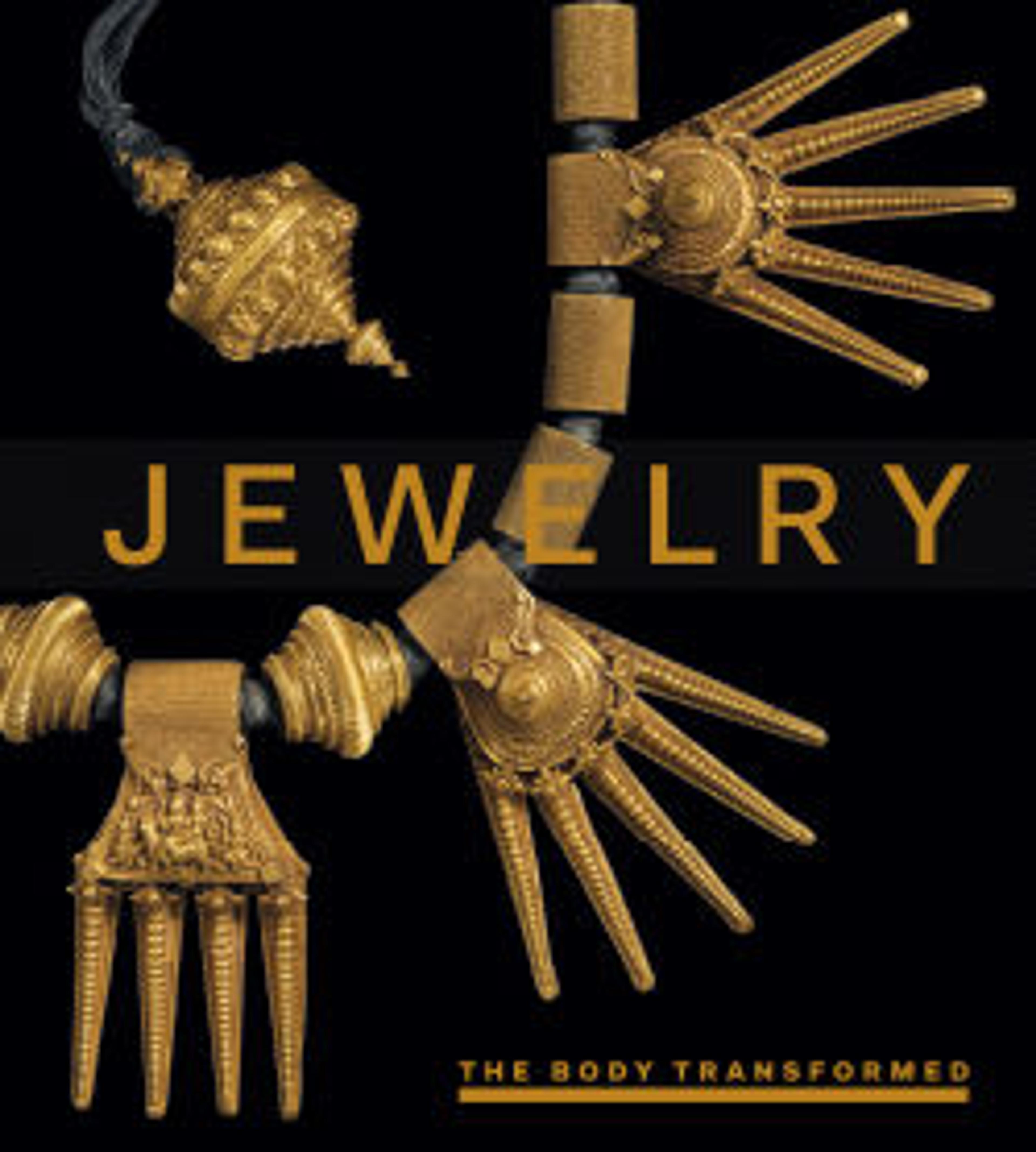Menat necklace from Malqata
A menat necklace consists of a heavy, keyhole-shaped counterpoise (menat) and many strands of beads. Although the necklace is sometimes shown being worn (fig. 2 above), it was more often carried by females participating in religious ceremonies. It functioned as a percussion instrument that was shaken to create a soothing noise that was thought to appease a god or goddess. In the New Kingdom the menat necklace and sistrum (68.44) were attributes of women who held the title "Singer of Amun-Re" such as Renenutet, who is depicted holding her menat on her lap in a statue.
In the early 20th century, the Museum conducted excavations at Malqata, a site at the southern end of the Theban necropolis where Amenhotep III had built a festival city for the celebration of his three jubilees (or heb seds). This miraculously preserved menat necklace and two single-strand necklaces of beads and amulets were found in the corner of a room in a private house near the King's Palace. According to the excavators, the three necklaces had been placed in a linen bag, traces of which were still visible.
Link to a blog about the Museum's excavations at Malqata
The Met's Joint Mission to Malqata
In the early 20th century, the Museum conducted excavations at Malqata, a site at the southern end of the Theban necropolis where Amenhotep III had built a festival city for the celebration of his three jubilees (or heb seds). This miraculously preserved menat necklace and two single-strand necklaces of beads and amulets were found in the corner of a room in a private house near the King's Palace. According to the excavators, the three necklaces had been placed in a linen bag, traces of which were still visible.
Link to a blog about the Museum's excavations at Malqata
The Met's Joint Mission to Malqata
Artwork Details
- Title:Menat necklace from Malqata
- Period:New Kingdom
- Dynasty:Dynasty 18
- Reign:reign of Amenhotep III
- Date:ca. 1390–1352 B.C.
- Geography:From Egypt, Upper Egypt, Thebes, Malqata, Birket Habu Mound B 1, Private House B, MMA excavations, 1911–12
- Medium:Faience, bronze or copper alloy, glass, agate, carnelian, lapis lazuli, turquoise
- Dimensions:L. of counterpoise 14.7 cm (5 13/16 in.)
- Credit Line:Rogers Fund, 1911
- Object Number:11.215.450
- Curatorial Department: Egyptian Art
More Artwork
Research Resources
The Met provides unparalleled resources for research and welcomes an international community of students and scholars. The Met's Open Access API is where creators and researchers can connect to the The Met collection. Open Access data and public domain images are available for unrestricted commercial and noncommercial use without permission or fee.
To request images under copyright and other restrictions, please use this Image Request form.
Feedback
We continue to research and examine historical and cultural context for objects in The Met collection. If you have comments or questions about this object record, please contact us using the form below. The Museum looks forward to receiving your comments.
